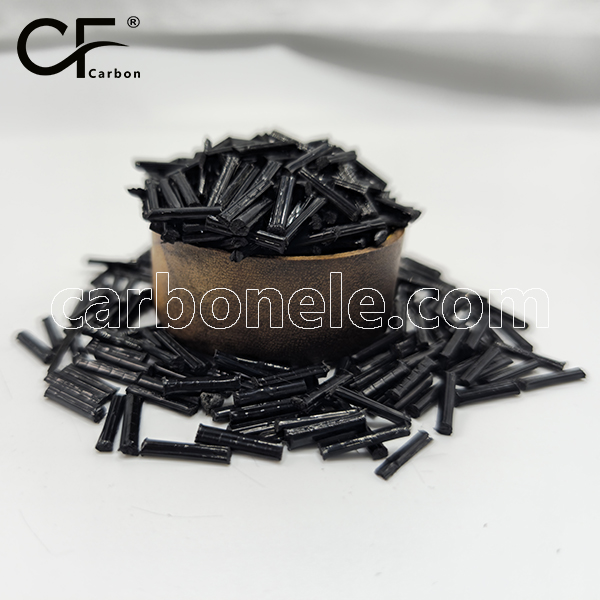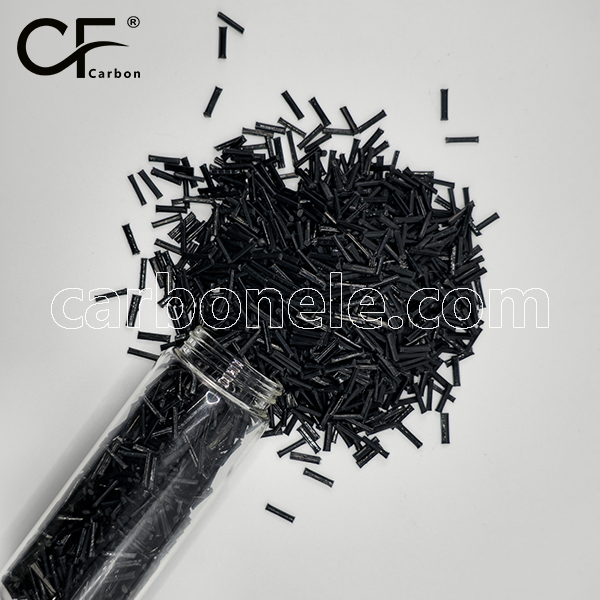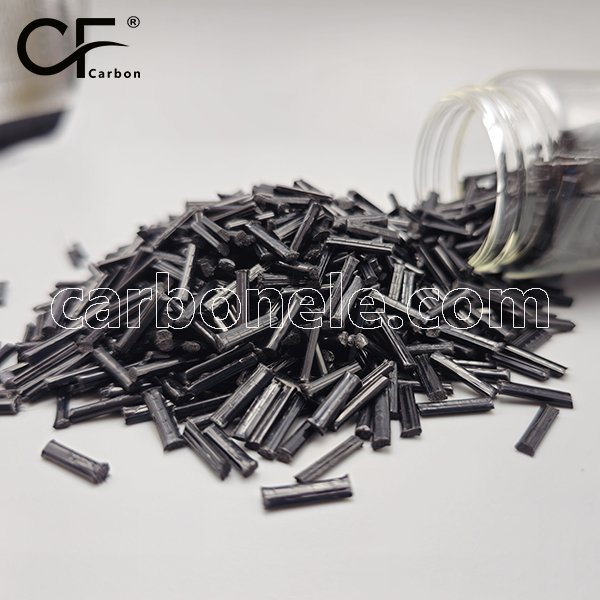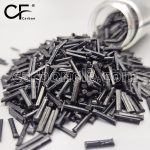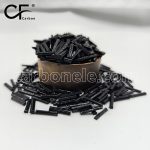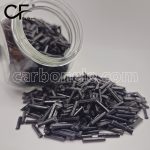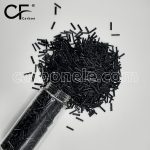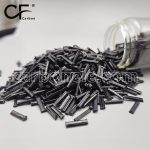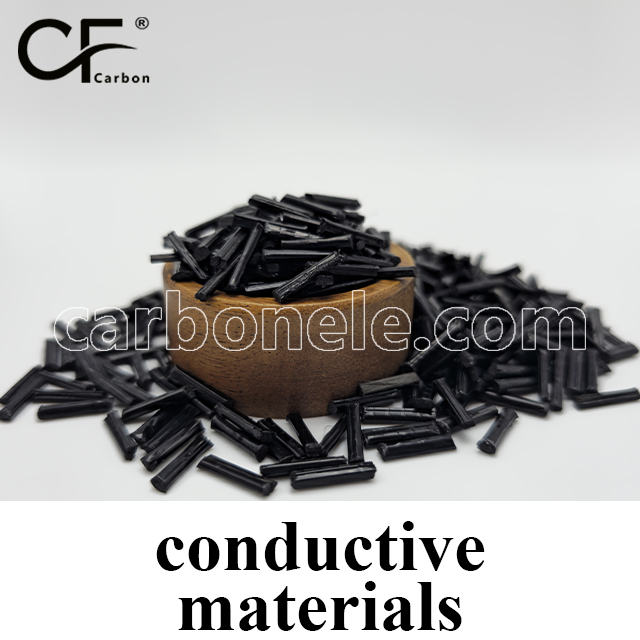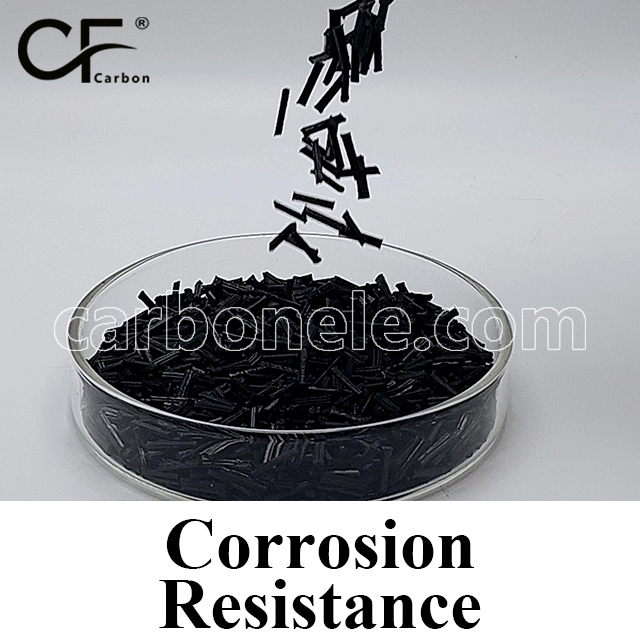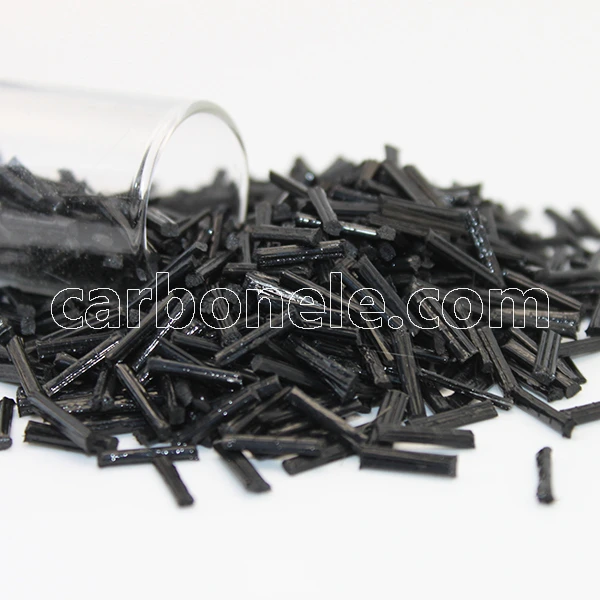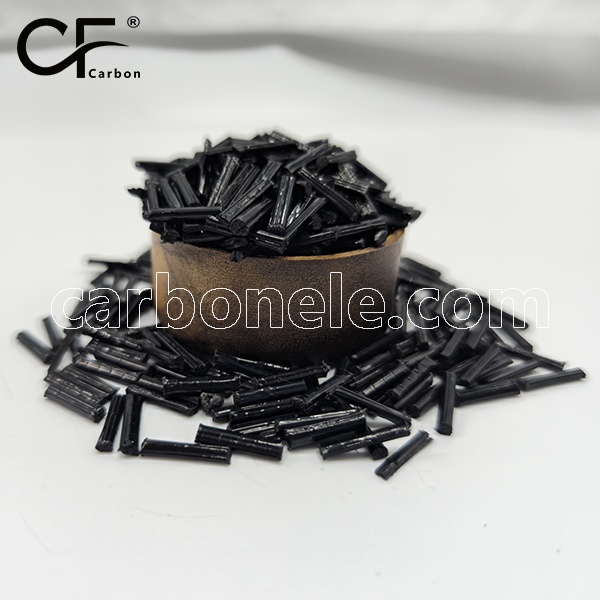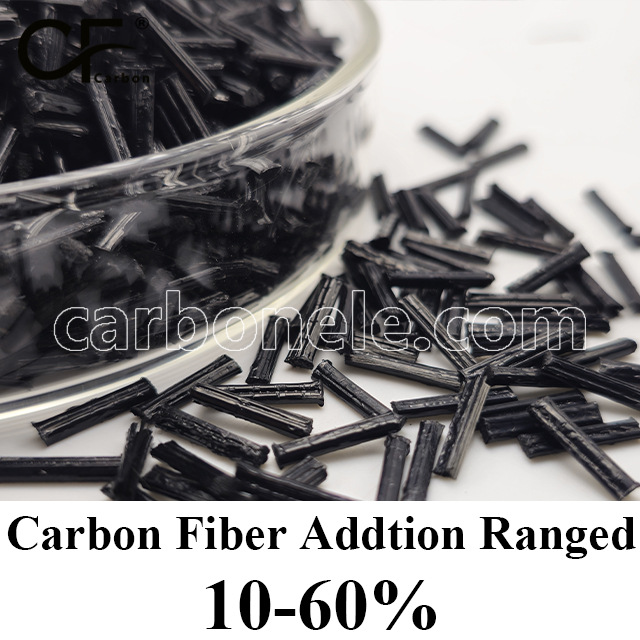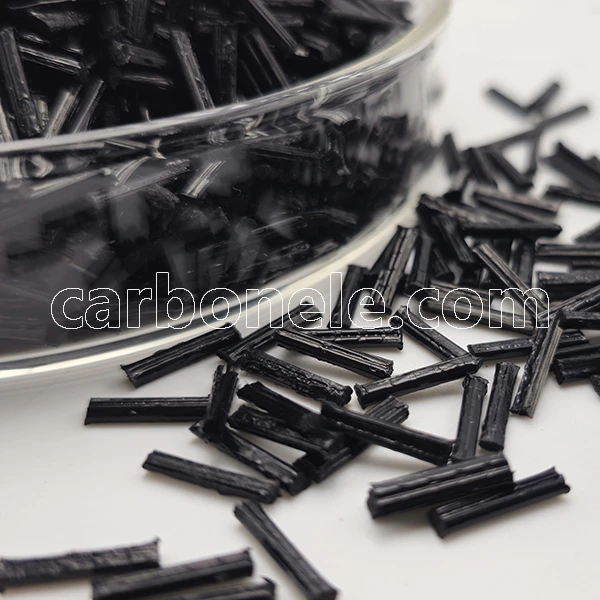
Antistatic PA12 LCF20 China Manufacturer Prices for ESD-safe Trays
Antistatic PA12 LCF20 Features:
*Permanent ESD protection: 10⁶-10⁹ Ω surface resistance (IEC 61340-5-1)
*High strength: 95-115 MPa tensile (ISO 527)
*Chemical resistant: Withstands 500+ IPA cleaning cycles
*Thermal stable: 155-165°C HDT (ISO 75-A)
- Manufacturer: Carbon New Material
- OEM/ODM: Acceptable
- Color: Black
- Free samples: ≤10kg
- MOQ: 100kg
- Port: Xiamen
- Model: PA12-LCF-BCA2
- Fillers: LCF
Material Introduction
Antistatic PA12 LCF20 is an innovative polymer composite specifically engineered for ESD-sensitive applications. By combining polyamide 12 (PA12) with 20% long carbon fiber (LCF) reinforcement, this material delivers permanent antistatic properties without requiring additional surface treatments. The unique formulation of Antistatic PA12 LCF20 provides superior protection for sensitive electronic components while maintaining excellent mechanical performance.
Key Advantages for ESD-Safe Trays
-
Reliable ESD Protection
-
Surface resistance: 10⁶-10⁹ Ω (per IEC 61340-5-1)
-
Charge decay time: <2 seconds (meets ANSI/ESD S20.20)
-
Permanent antistatic properties (unlike coated alternatives)
-
Enhanced Mechanical Performance
-
Tensile strength: 95-115 MPa (ISO 527)
-
Flexural modulus: 5.5-6.5 GPa (ISO 178)
-
Impact resistance: 55-75 kJ/m² (ISO 179)
-
Superior Durability
-
Withstands >500 cleaning cycles (IPA, acetone)
-
HDT: 155-165°C (ISO 75-A)
-
Moisture absorption: <0.9% (ISO 62)
-
Precision Manufacturing
-
Low warpage (<0.3% shrinkage)
-
Excellent flow characteristics
-
Suitable for thin-wall molding (down to 1.2mm)
Why Choose Antistatic PA12 LCF20?
Antistatic PA12 LCF20 offers the perfect balance of ESD protection and mechanical integrity for demanding tray applications. The material’s permanent antistatic properties eliminate the risk of performance degradation over time, while its carbon fiber reinforcement provides the strength needed to protect valuable components. With its combination of chemical resistance, thermal stability, and dimensional precision, Antistatic PA12 LCF20 delivers reliable performance throughout the product lifecycle, making it the ideal choice for semiconductor, electronics, and medical device applications.
Surface Resistivity Comparison
Conductors < 10⁵ Ω/sq. Antistatic Materials 10⁵ ~ 10¹² Ω/sq. Insulators > 10¹² Ω/sq. Static-Dissipative 10⁶ ~ 10¹¹ Ω/sq. *Key Influencing Factors Humidity: Increased moisture can reduce resistivity (e.g., in polymers). Temperature: Affects carrier mobility (↑ heat may lower semiconductor resistivity). Surface Contamination: Dust/oils alter readings significantly. Additives: Carbon black, metallic fillers can lower resistivity. *Applications Electronics: Antistatic materials (10⁶–10⁹ Ω/sq) prevent electrostatic discharge (ESD). Aerospace: Composites must control resistivity to avoid charge buildup. Medical Devices: Insulating materials (>10¹² Ω/sq) ensure patient safety. *Examples Polypropylene (PP): ~10¹⁶ Ω/sq (excellent insulator). Carbon Fiber Composites: 10³–10⁶ Ω/sq (static dissipation). ESD Flooring: 10⁶–10⁹ Ω/sq.
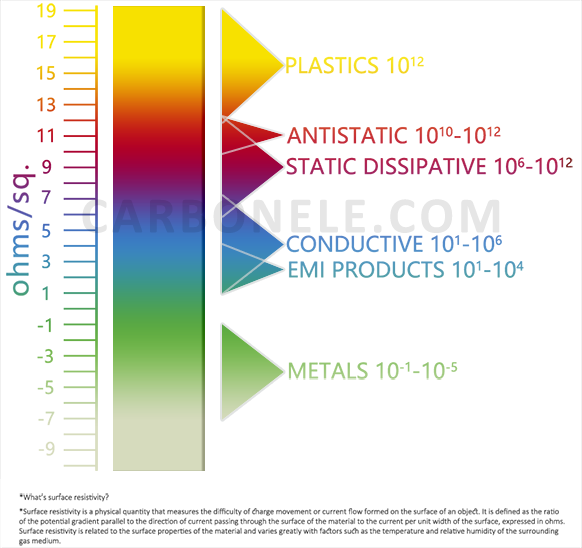
Get to Know Carbon Fibers
The table presents key performance data of carbon fiber grades. T300, with a tensile strength of 3530 MPa and a tensile modulus of 230 GPa, has a relatively low tensile elongation at break of 1.5% and a body density of 1.76 g/cm³. As the grade increases, for example, T700S shows an enhanced tensile strength of 4900 MPa compared to T300, while maintaining the same tensile modulus but with a higher elongation at break of 2.1%. T800S and T1000G both have a tensile modulus of 294 GPa, and their tensile strengths are 5880 MPa and 6370 MPa respectively. T1100G stands out with the highest tensile strength of 7000 MPa and a tensile modulus of 324 GPa. Generally, with the increase in product grade, the tensile strength and modulus tend to rise, while the density remains relatively stable around 1.8 g/cm³.
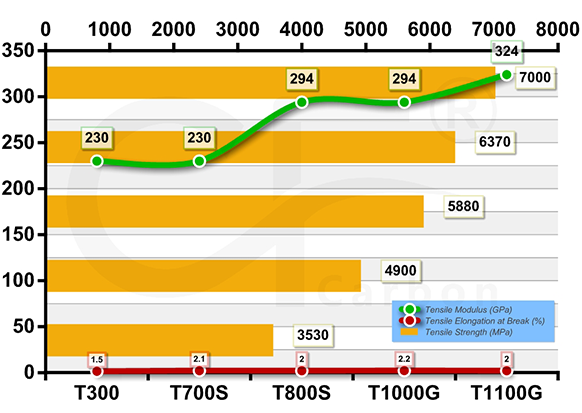
How to Buy?
If you want to obtain information such as product specifications, performance, and price, choose a suitable product according to your own needs. Meanwhile, you can ask the manufacturer to provide samples for testing to ensure that the material meets your usage requirements. If you are interested in purchasing this composite material, please contact the manufacturer Carbon (Xiamen) New Material directly.
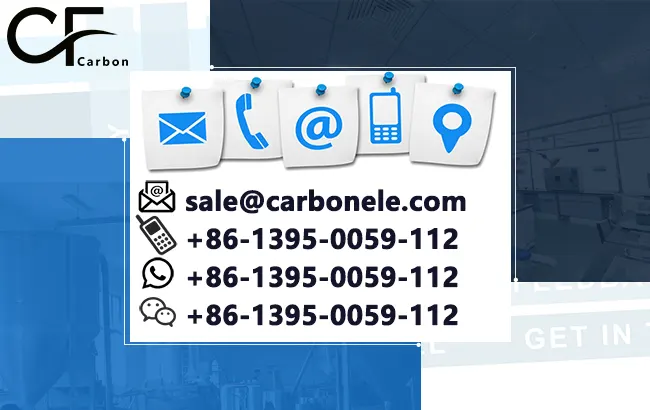
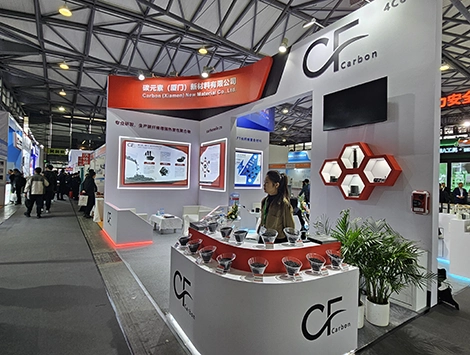

Frequently Asked Questions
Carbon (Xiamen) New Material Co., Ltd. aims to provide buyers with "one-stop" worry-free high-quality services. Here you can find all information about carbon fiber engineering plastics. If you still have questions, please send us an email for consultation!
-
How can I contact the manufacturer of a product that interests me?
When you find a product you are interested in, you can contact the manufacturer directly by sending an email and we will get back to you as soon as possible.
-
How do I find the products that interest me?
All you need to do is enter the keyword, product name in the search window and press the Enter key on your keyboard. Your search results page will then be displayed. You can also search within the product category pages on the home page. Each category is divided into subcategories, allowing you to refine your search and find products that interest you.
-
Where will I find a buying guide?
Please contact our after-sales service directly and we will provide you with a comprehensive operating guide.
-
What are CF Reinforced Thermoplastic Composites?
CF Reinforced Thermoplastic Composites are materials where carbon fibers are incorporated into a thermoplastic matrix. They combine the strength and stiffness of carbon fibers with the processability and recyclability of thermoplastics. For instance, they are used in automotive parts like bumper beams.
-
What are the benefits of CF Reinforced Thermoplastic Composites over traditional composites?
The key benefits include faster production cycles, easier recyclability, and better impact resistance. They also offer design flexibility. An example is in the manufacturing of consumer electronics casings where complex shapes can be achieved more easily.
-
How are CF Reinforced Thermoplastic Composites processed?
Common processing methods include injection molding, extrusion, and compression molding. Injection molding is widely used for mass production. For example, in the production of small components for the medical industry.
-
What industries use CF Reinforced Thermoplastic Composites?
They are utilized in aerospace, automotive, medical, and sports equipment industries. In aerospace, they can be found in interior components. In the medical field, they might be used in prosthetics.
-
How does the carbon fiber content affect the properties of the composites?
Higher carbon fiber content generally leads to increased strength and stiffness but may reduce ductility. A moderate content is often balanced for specific applications. For example, a higher content might be preferred in structural parts of a race car.
-
What are the challenges in using CF Reinforced Thermoplastic Composites?
Challenges include higher material costs, complex processing equipment requirements, and ensuring uniform fiber dispersion. Issues with adhesion between the fibers and the matrix can also arise. An example is in achieving consistent quality in large-scale production.








